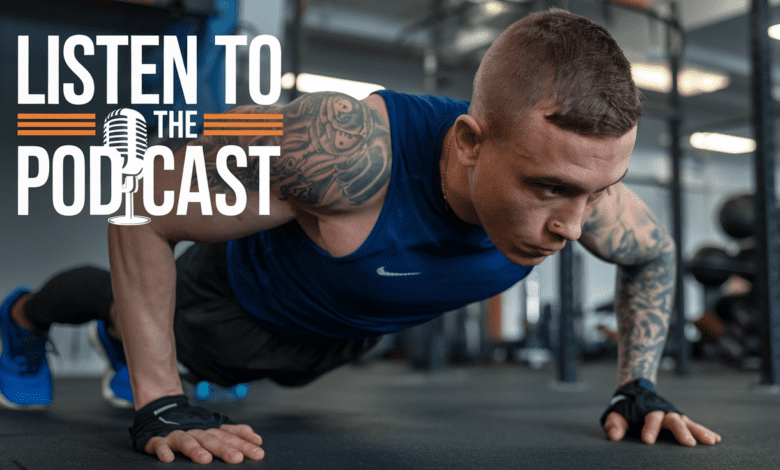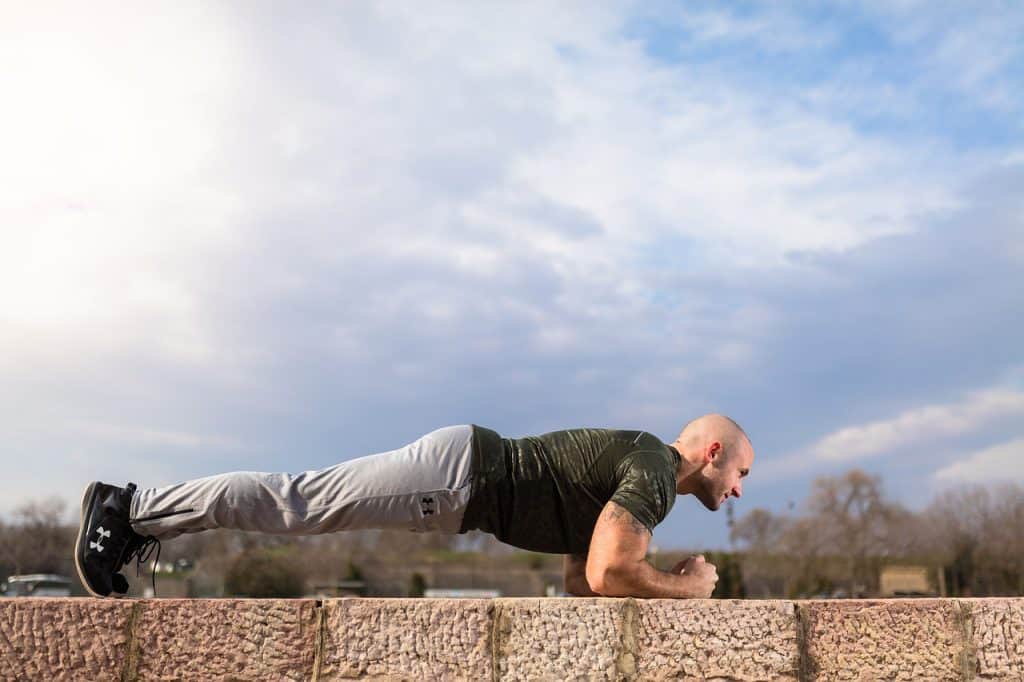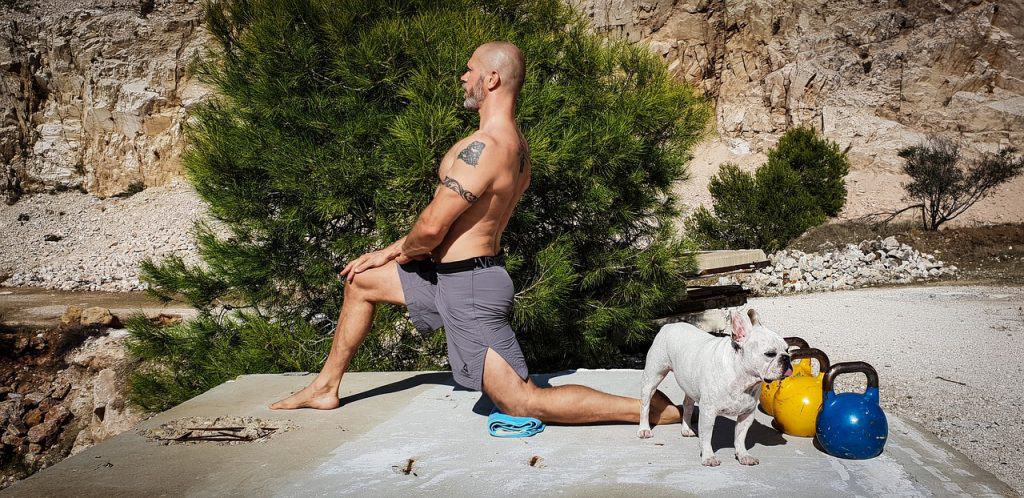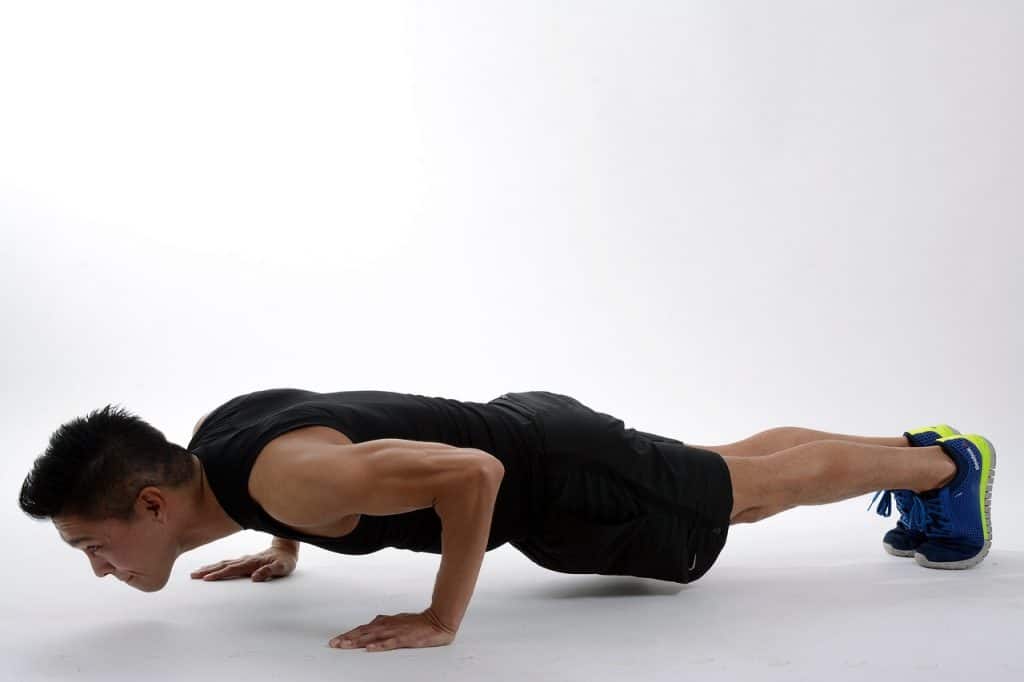7 Best Body Composition Exercises: You Should Know in (2025)

What Are Body Composition Exercises?
Body composition exercises encompass activities such as pullups, pushups, squat jumps, and lunges. These exercises contribute to the development of strength, endurance, and muscle mass, while simultaneously enhancing balance and coordination. Body composition exercises prove particularly advantageous for individuals striving to lose weight, increase muscle mass, or enhance overall body tone. Notably, they offer the convenience of equipment-free workouts that can be seamlessly incorporated into leisure activities such as watching TV or listening to music.

December 30, 2024 ·
7 Best Body Composition Exercises
13 Min, 7 Sec · By All Perfect Health
#009: In this episode of 7 Best Body Composition Exercises, we explore the essential role of body composition exercises in achieving your fitness goals and improving overall health. Learn how strength training, cardio, and functional workouts can help you build muscle, burn fat, and enhance your body composition. We break down effective exercise routines, tips for beginners, and the science behind why focusing on body composition is more impactful than weight alone. Whether you’re starting your fitness journey or looking to refine your routine, this episode offers actionable advice and inspiration. For more resources, visit allperfecthealth.com. Tune in and start your journey toward a stronger, healthier you!
What impacts body composition?

Your body composition is impacted by both diet and exercise, according to Dr Michael Mosley. A study published in the Journal of Applied Physiology found that men who performed resistance training had lower levels of fat mass than those who did aerobic activity alone. Another study showed that women who performed strength training lost more weight than those who exercised aerobically.
Strength training provides you with unique advantages over cardio training. While cardio exercises burn calories, strength training builds muscle mass. This increases metabolism, which helps you lose weight faster. Cardio training also promotes cardiovascular health, while strength training improves bone density and reduces risk factors like diabetes.
Both strength and cardio training are necessary to maintain a healthy body. You must include both activities in your fitness routine. If you want to see results, make sure you work out three times per week. Try to do one strength workout, such as lifting weights, and another type of cardio workout, like running or swimming. Include both types of workouts in each session.
What’s my ideal body composition?
If you’re trying to lose weight, it’s important to understand where you stand now. There are many different ways to measure body fat percentage, and each one provides a slightly different perspective on how much fat you carry around. Knowing your current levels allows you to set realistic goals and avoid frustration down the road.
The most common way to determine body fat percentage is via bioelectrical impedance analysis (BIA). This method involves measuring resistance against a small electric current sent through your body, which estimates total body water and fat mass based on your height and sex. BIA is considered the gold standard because it accurately measures both lean muscle mass and fat mass. However, it requires expensive equipment and training, and it doesn’t work well for people over 200 pounds.
Another popular option is dual-energy X-ray absorptiometry (DXA), which uses x-rays to estimate body fat percentage. DXA scans use less radiation than CT scans, making them safer for pregnant women and children. But like BIA, DXA isn’t very accurate for larger individuals.
Finally, there are skinfold callipers, which require no special equipment and can be used on anyone. They involve measuring the thickness of four areas of the body — biceps, triceps, subscapular, and suprailiac — and calculating the average to arrive at a final number. Skinfold calliper measurements aren’t as precise as either BIA or DXA, but they’re still useful for tracking progress.
In addition to knowing your body fat percentage, it’s helpful to know your body mass index (BMI). BMI is calculated by dividing your weight in kilograms by the square of your height in meters. A healthy range is 18.5 to 24.9. Anything above 25 indicates obesity, while anything under 18.5 suggests being underweight.
Once you’ve determined your current level of body fat, you’ll be able to decide whether you’d like to change it. If you do decide to make a lifestyle change, it’s important to find a partner who supports you. You might consider joining a gym or signing up for a class to help motivate you. And remember, even though you may feel discouraged, it’s okay to take baby steps toward reaching your goal.
Keep your diet healthy
Eating healthy doesn’t mean you have to eat bland foods. In fact, it’s quite the opposite. You don’t want to give up tasty treats because you’re trying to eat healthier. Instead, try adding some spice to your meal plan by incorporating a few of these healthy recipes into your daily routine. Healthy Choice Meals.
How to get your ideal physique
You’ve heard it over and over again: “If you want to get fit, start today.” But how do you actually go about doing that? Well, there are many ways to achieve your fitness goals, but one thing is certain: You’re going to need motivation. If you don’t have enough willpower to stick to your workout routine, you might find yourself giving up quickly. So, here are some tips to help you keep motivated throughout your journey towards achieving your dream body.
The Importance of Motivation
Motivation plays a huge role in whether or not you succeed in reaching your goals. Research suggests that lack of motivation is the number one reason why people fail to reach their health and fitness goals. Here are three reasons why motivation is important:
1. Motivation helps you overcome obstacles. When you feel like quitting, remember that you won’t make progress without putting forth effort. Even though you might not see immediate results, you will eventually reap the rewards of sticking to your plan.
2. Motivation keeps you focused on your long-term goals. Instead of focusing solely on short-term gains, think about where you want to be in five years. This way, you’ll always be striving for something bigger and better.
3. Motivation makes you happy. By setting realistic goals, you’ll never feel overwhelmed. And once you accomplish those goals, you’ll feel proud and accomplished. Plus, you’ll also enjoy the feeling of accomplishment.
So, next time you decide to hit the gym, try to remember that motivation is key to success. With a little inspiration, you can easily achieve your fitness goals.
Listen to your body.
Weight loss isn’t always about weight loss. You might think that losing weight requires shedding pounds. But it doesn’t necessarily mean that you are losing weight. Your goal should be to change your body composition, not simply to lose weight.
You don’t want to lose weight; you want to lose fat. And you want to do it without sacrificing lean muscle tissue. This means focusing on changing your body composition—not just your weight.
The problem is that most people measure success by how much they weigh. They look at the numbers on the scale and feel like they failed because they didn’t lose enough weight. Or maybe they gained some weight, but they still lost less than they wanted to. Either way, they feel like they’ve failed.
But what if we told you that there’s another way to measure success? What if we told you that measuring your progress based on the numbers on the scale is counterproductive?
If you want to lose weight, you need to focus on burning calories while gaining muscle mass. If you do both correctly, you’ll burn more calories than you consume. When you eat fewer calories than you expend, you naturally lose weight.
And here’s the kicker: compound exercises work multiple muscles simultaneously. So, even though you’re working out one muscle group, you’re also strengthening another. This helps you build muscle mass, which burns additional calories.
So, rather than counting calories, count reps. Rather than worrying about the number on the scale, worry about your body fat percentage. And remember: weight loss isn’t solely about weight loss. It’s about changing your body composition.
Train to failure.
The term “failure” is often used interchangeably with “success,” but it’s quite different. Failure is something we strive for; success is something we achieve. If you want to lose weight, you’re failing every day if you don’t see progress toward your goal. But if you want to succeed, you’ll never stop striving for better health.
One study found that people who fail to meet their fitness goals tend to become less active over time. So how do you know whether you’ve failed or succeeded? You might think that seeing yourself gain weight is a sign of failure, but according to research published in the journal Preventive Medicine, it’s a good thing.
Researchers at Brigham Young University looked at data from nearly 7,500 adults who participated in the National Health and Nutrition Examination Survey. They asked participants about their height, weight, physical activity levels, and diet habits. Then they followed up with those same individuals five years later.
They found that people who gained weight during the follow-up period had lower odds of being obese at baseline. In other words, gaining weight was associated with healthier body composition. This suggests that losing weight isn’t necessarily a sign of failure — it could just mean that you’re making healthy choices.
So if you haven’t been able to reach your goal weight, don’t beat yourself up. Instead, focus on what you’ve accomplished. You’re still fit, even though you didn’t make the changes you wanted. And if you keep trying, eventually you’ll find a plan that works for you.
Get your mind right.
If you’re trying to lose weight, it might seem like every diet out there promises quick results. But what happens when you stop losing weight? What if you gain it again? If you want to keep the pounds off permanently, you’ll need to stick with your plan—and avoid the most common pitfalls. Here are some ways to make sure you succeed.
1. Squats
Squats are one of the most effective exercises out there for building muscle mass. They help improve your balance, coordination, stability, and flexibility. You can do squats using free weights, body weight, or even just your body weight. If you’re looking to add some serious size to your legs, squats are a great place to start.
The squat is a compound movement that works multiple muscle groups including your quadriceps, hamstrings, glutes, calves, lower back, abs, shoulders, arms, chest, and triceps. It’s important to keep your knees slightly bent throughout the entire set. Your hips should always remain over your toes. You’ll feel a stretch in your quads and hamstrings.
Start with no knee lift. Slowly lower yourself into a deep squat position while keeping your heels flat on the floor. Keep your torso upright and avoid leaning forward. Once you reach about 2 inches above the ground, push back up to standing. Repeat this motion 10 times.
If you’d like to make it easier, try doing lunges instead of squats. Start by taking a large step backward with your left foot. Bend both knees 90 degrees and slowly lower your body toward the floor. Push back up to standing. Do 8 reps on each side.
2. Lunges

The lunge is one of the most popular leg exercises because it works the entire lower body. This exercise strengthens the quads, glutes, hamstrings, adductors, hip flexors, and calf muscles. Lunges are great for building strength and endurance, especially for beginners.
To perform the lunge, stand up straight with feet shoulder-width apart. Step forward with your left foot and place your hands on your hips. Bend your right knee slightly and step forward into a lunge position. Keep your front knee over your ankle, and continue to bend your rear knee until your front knee almost touches the floor. Slowly return to a standing position. Repeat with the opposite leg. Perform three sets of 10 repetitions per leg.
3. Plank

The plank is one of the best exercises for building strength in your core. This exercise strengthens your abdominal muscles, helps improve balance, increases flexibility, improves coordination, and reduces the risk of injury.
A planked position requires you to hold your body straight while lying flat on your stomach. Your arms must be extended outwards away from your body. You can use a variety of different positions, such as holding your elbows together or placing your forearms on the floor.
Start with 10 seconds of holding the plank position, followed by five seconds of rest. Repeat three times, resting for 30 seconds between each set.
You can perform the plank with your feet placed on either side of a wall, or a bench. If you choose the latter option, make sure there is enough room for both legs to extend fully.
4. Ab & Core Workouts
Building up muscle strength in your abdomen area will help you maintain better positioning and keep your spine stable. Abdominal exercises target muscles on the front of your body, including the abs and hip flexors. Core exercises strengthen the muscles surrounding the centre of your torso, including the rectus abdominal, transverse abdominus, internal oblique, and external oblique.
5. Jumping Jacks
Jumping jacks are one of the best exercises for building strength and stamina. They’re easy to do and great for cardio too. You’ll feel like you’ve just run a marathon while doing jumping jacks.
Start by standing up straight and holding yourself up with both hands. Then jump up high enough so that your knees almost touch your chest. Keep your arms extended above your head. Repeat this motion quickly about 20 times. If you want to make it harder, try doing jumping jacks while holding dumbbells.
6. Push-Ups
Pushups are an exercise that everyone knows about. They’re simple enough to do anywhere, but they’ll make you stronger and help you lose weight.
a. Standard Pushup
The best part is that pushups don’t require much equipment. All you need is a wall or sturdy surface to perform pushups on. If you want to add some variety to your workout routine, try doing wide pushups. These exercises work your upper arms, shoulders, and back muscles.
b. Wide Pushup
Start by standing about 2 feet away from a wall. Place your hands on the wall, keeping your fingers slightly wider than shoulder-width apart. Keep your legs straight and bend forward until your chest touches the floor. Your body should form a T shape. Pause here for a few seconds before pushing yourself up again. Do 3 sets of 10 reps each.
c. Military Pushup
This version of the classic Pushup requires less space and fewer objects to support it. Instead of placing your hands on a wall, place one hand on the ground and the other on a chair. Start by lying down on the ground with your head resting on the edge of the chair. Bend your elbows and lower your chest toward the ground. When your chest reaches the floor, pause for a second before getting back into position. This variation works your triceps, biceps, forearms, and core. Try performing 5 sets of 20 reps each.
7. Deadlifts
Deadlifting is an important exercise for developing strong muscles. To perform the deadlift correctly, you must keep your chest up, shoulder blades down, and spine straight. When performing the deadlift, it is best to use a barbell rather than a kettlebell.
Simple Lifestyle Changes To Achieve Your Ideal Body Composition
Exercise regularly is important to maintain your health. If you are looking to lose weight, eating well is just as important. There are many ways to achieve both goals. One such method is to incorporate strength and resistance training into your daily routine. This type of workout burns calories while building up lean muscle tissue. Another great way to increase your energy levels is through walking. Walking improves your mood because it increases blood flow throughout your brain and body. Finally, cardio exercise is another option. Cardio exercise helps burn excess fats and builds muscle mass. These three simple lifestyle changes will help you achieve your ideal body composition.
FAQs- Frequently Asked Questions:
Q: What is body composition?
A: Body composition is the percentage of body weight made up of fat and muscle.
Q: What are some benefits of knowing your body composition?
A: There are many benefits to knowing your body composition, including but not limited to: being able to track your progress, setting realistic goals, and adjusting your diet and exercise routine accordingly.
Q: How can I measure my body composition?
A: There are many ways to measure your body composition, including but not limited to: using a scale that measures body fat percentage, using calliperspractisingreading best to measure skinfold thickness, or using a bioelectrical impedance machine.
Q: What are some exercises to measure body composition?
A: Some examples of exercises to measure body composition include but are not limited to isometric measurements, lunges, squats, push-ups, chin-ups/pull-ups.
Q: How can I improve my body composition?
A: Improving your body composition involves reducing fat and increasing muscle mass. Some ways to do this are a healthy diet, cardiovascular exercise, resistance training, marker-assisted programs, or supplements.
Q: What are some common misconceptions about measuring body composition?
A: There are many misconceptions about measuring body composition. Some include but are not limited to: the assumption that weight is related to body fat percentage, weighing yourself every day helps you know your progress, etc.
Q: What are some ways to improve my results?
A: There are many ways to improve your results, including but not limited to changing how you measure your progress, having a plan of action to follow, and finding an exercise buddy.
Q: What is the best way to measure body composition?
A: There are many opinions on the “best” way to measure body composition. Some options include but are not limited to using callipers or bioelectrical impedance machines.
Q: Would swimming improve my results?
A: Swimming is a perfect exercise as it works and strengthens many mussels groups at a time.
Body composition exercises: Reference
Compound movements in strength training are best for building muscle and losing fat. They work for multiple muscle groups at the same time, giving you maximum muscle strengthening and burning lots of calories to help you build muscle tone and lose fat.
External Link: https://www.ncbi.nlm.nih.gov/labs/pmc/articles/PMC2966873/
As with the squats, there are also various plank variations. Perform the recommended variations by your instructor depending on your fitness abilities. Additionally, learn how to do each plank exercise correctly. It will help you transform into your desired body shape.
External Link: https://www.webmd.com/fitness-exercise/guide/fitness-how-tos
Builds lean muscle mass. Strength training increases the size of major muscle groups, thereby building lean muscle mass. Building lean muscle mass improves athletic performance as well as your ability to perform daily activities. Research has found that ten weeks of strength training can increase lean muscle mass by around three pounds.
External Link: https://pubmed.ncbi.nlm.nih.gov/22777332/
Keeps burning fat after your workout. Aerobic exercises like running and cycling have long been heralded as one of the most effective ways to torch calories and shed extra weight. However, strength training is also a powerful way to cut down the fat mass and improve your body composition. When you increase your lean mass, you boost your resting metabolic rate (RMR), or the rate at which your body burns calories during daily life.
Research indicates ten weeks of resistance training could increase your RMR by an estimated 7 per cent. In addition, strength training workouts boost your excess post-exercise oxygen consumption (EPOC), or the calories your body continues to burn after exercising. Compared to cardio, strength training keeps your metabolism burning hotter for longer after working out. This helps prevent the calorie surplus that causes your body to store excess energy in fat cells and leads to a gain in fat mass.
Body composition refers to the ratio of your body’s fat to lean mass. To evaluate it, experts look at your total body fat percentage. According to experts, your body fat may tend to change due to your dietary patterns, age, genes, and other primary factors. Below is a sample of the recommended body fat per cent within different age groups.
External Link: https://www.medicalnewstoday.com/articles/body-fat-percentage-chart
More great articles that may be of interest to you 🙂
If you want to learn more information about Body Composition Exercises: SO you can read this article: Body Composition Exercises: Achieve Your Goals
